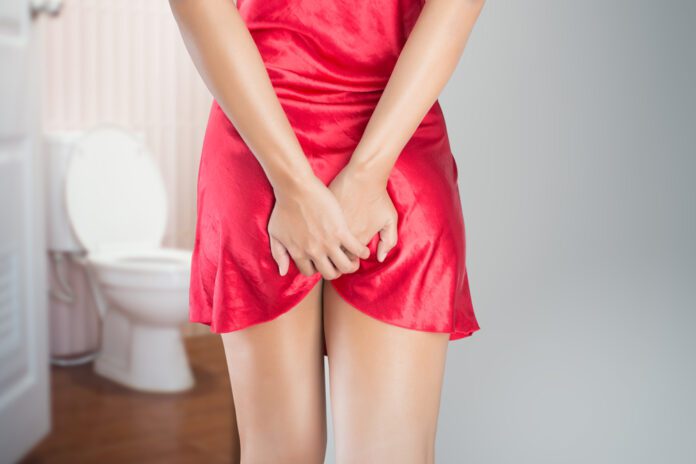Overview Of Urinary Incontinence In Women
Urinary incontinence in women occurs when you are unable to keep urine from leaking out of your urethra. The urethra carries urine from your bladder out of your body through a tube.
Health care professionals mostly refer to urgency incontinence as an overactive bladder, which can happen when certain nerves and bladder muscles don’t work together.
Bladder control problems affect the way a person releases urine.
The three main types of urinary incontinence are:
- Stress incontinence — occurs during activities like laughing, coughing, sneezing, or exercise.
- Urge incontinence — results from a strong need to urinate immediately.
- Overflow incontinence — occurs when the volume of urine in the bladder exceeds its capacity leading to dribbling.
Sometimes urgency and stress incontinence can occur at the same time, which is called mixed incontinence.
Commonly Associated With
Loss of bladder control; UncoLoss of bladder control; Uncontrollable urination; Incontinence – urinary; Overactive bladder.
Causes Of Urinary Incontinence In Women
Urinary tract infections, vaginal infections or constipation can cause incontinence whilst certain medications can cause short-term bladder control problems.
Long-lasting urinary incontinence in women may be due to:
- Weak bladder muscles
- Weak pelvic floor muscles
- Overactive bladder muscles
- Damage to nerves that control the bladder from diseases like diabetes, multiple sclerosis, or Parkinson’s disease
- Diseases like arthritis
- Pelvic organ prolapse
Symptoms Of Urinary Incontinence In Women
Symptoms of urinary incontinence can include
- Leaking urine during everyday activities
- Sudden urge to urinate right away
- Inability to get to toilet in time
- Bedwetting
A woman’s bladder control problems are affected by childbirth, menopause and other health factors.
Treatment Of Urinary Incontinence In Women
Treatment for incontinence depends on its type and causes. See your health care provider for tests and a treatment plan if you have symptoms of incontinence.
Lifestyle changes may be needed alongside other treatments.
- Ensure regular bowel movements to avoid constipation by increasing the fiber in your diet.
- Quit smoking to reduce bladder irritation.
- Avoid alcohol and caffeinated drinks.
- Lose weight if necessary.
- Avoid foods and drinks that could irritate your bladder.
- Ensure your blood sugar under control if you have diabetes.
Bladder retraining and pelvic floor exercises
This retraining helps you better control your bladder and Kegel exercises help you strengthen the muscles of your pelvic floor.
People often benefit from formal bladder strengthening and retraining with a pelvic floor specialist.
Medicines
Your provider may prescribe drugs that help prevent muscle spasms, relax the bladder, and improve bladder function depending on the type of incontinence you have.
Your healthcare provider can also help you manage side effects.
Surgery
Your provider may recommend surgery if other treatments do not work or you have severe incontinence.
The surgery type will depend on:
- Type of incontinence
- Severity of symptoms
- Cause of incontinence
A catheter may be needed if you have overflow incontinence or you cannot fully empty your bladder.
You may use a catheter that stays in long-term, or one that you can put in and take out yourself.
Bladder nerve stimulation
Electrical nerve stimulation can also be used to treat incontinence and reprogram bladder reflexes. For this treatment, a stimulator can be inserted through the skin near a nerve in the leg.
A battery-operated implant, similar to a pacemaker, can also be placed under the skin in the lower back.
Botox injections
Incontinence can sometimes be treated with an onabotulinum injection (also known as Botox).
This injection increases the storage capacity of the bladder by relaxing the bladder muscles and is delivered through a cystoscope (a thin tube with a camera on the end).
This procedure is mostly done in the provider’s office.
Other
Managing Urinary Incontinence In Women
Aside from bladder control training, medicines can help empty the bladder during urination or tighten muscles to lessen leakage.
A doctor may inject a substance to thicken the area around the urethra to help close the bladder opening. This treatment may be repeated.
Women can use estrogen vaginal cream to help relieve stress or incontinence. A low dose of estrogen cream is applied to the vaginal walls and urethral tissue.
Some women can use a urethral insert or a pessary to prevent leaking in a prolapsed bladder or vagina.
Surgery can also improve or cure incontinence if it is caused by a blockage due to an enlarged prostate or a change in the position of the bladder.
Furniture pads, urine deodorizing pills, adult diapers, and special skin cleansers can also help the situation.



